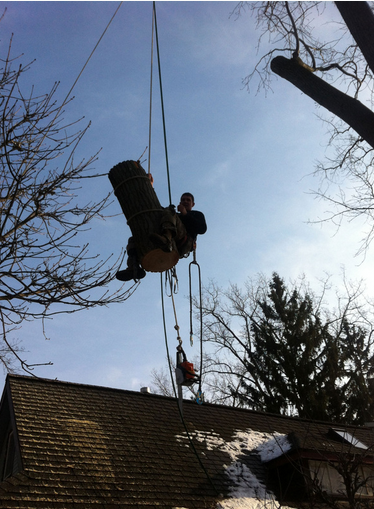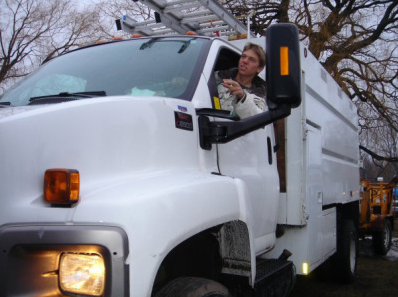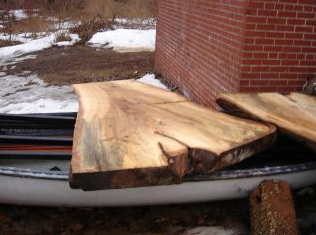Last December’s ice storm, which forced officials and experts alike to rethink their approach to urban forest management, left truckloads of wood in its wake. Right up until the first signs of spring, a small fleet of us arborists and private contractors continued to work our way through the storm’s destruction. This winter awakened many people to the importance of pruning and the benefit of investing now, rather than paying for it later. But another question burns in their minds - where does all that wood go?
In January, as the winds calmed down, we drove to a home in north Toronto, an area heavily affected by the ice storm. Tyler has been my mentor, teaching me where and how to make cuts before picking up a sheer or a saw and how to exercise great care with each tree. I prune a modest lilac tree (Syringa reticulata) while he takes down large branches from an older Austrian pine (Pinus nigra). Cuts flush with the main stem may open large wounds, but too much of a stub left over can lead to dieback of a branch. It’s a delicate art.

We haul the branches, still laden with fist-sized clumps of ice, into the truck. The ice makes for a heavier (and costlier) load when we drop it off at the nearby City of Toronto Transfer Station. These stations accept leaf and yard waste year-round from City’s Parks, Forestry and Recreation, as well as residents and contractors.

Each drop-off is weighed and all branches must be less than 7.5cm in diameter (the same as your yard waste limits). The first 20 kilograms are free, and it is $1.00 per 12.94 kilograms after that. Most is then mulched and used for landscaping in parks across the city.
It’s less straightforward to dispose of larger wood so many arborists seek alternatives. A considerable amount is chipped on-site for mulch, then disposed of at transfer stations or made available to landscaping projects.
Often this wood could be repurposed (i.e. made into furniture, bowls, crafts, etc.). With so many of the trees we work on, we put aside the choice pieces of wood. Of the Austrian pine, we keep pieces for table legs. With lower quality wood, we cut logs to be split and sold for firewood. With other pieces that are beyond saving - rotten or otherwise unusable - we contract out the chippers to process it into mulch.

“Most people don’t see the value in the trees that they have” laments Tyler. The way he sees it, Toronto’s canopy is rich in tree diversity and has so much to offer. He is always on the lookout for the hidden potential.
Usually, trees that are affected by major storms are already in decline, but with the intensity of our recent ice storm, plenty of healthy trees also came down. Their wood can be something more than mulch. Silver maple, for example, is one of the species most affected by the storm and it provides fairly hard, high quality wood.
LEAF is working with the City of Toronto, tree care companies, designers and woodworkers to share the concept of urban wood utilization. A lot of us are on board because it makes so much sense. Why wouldn’t you take advantage of your fallen black locust’s durability for a backyard bench rather than whittle it away into ground cover? Or keep the rich colour of your cherry tree for a desk? So many opportunities to source local wood exist in the GTA -- it’s just up to us to find them.
Lisa Erdle is a forest ecologist and apprentice arborist with We Care Tree Care from Toronto. LEAF encourages urban wood utilization and you can find more information and resources on utilizing urban wood here.
